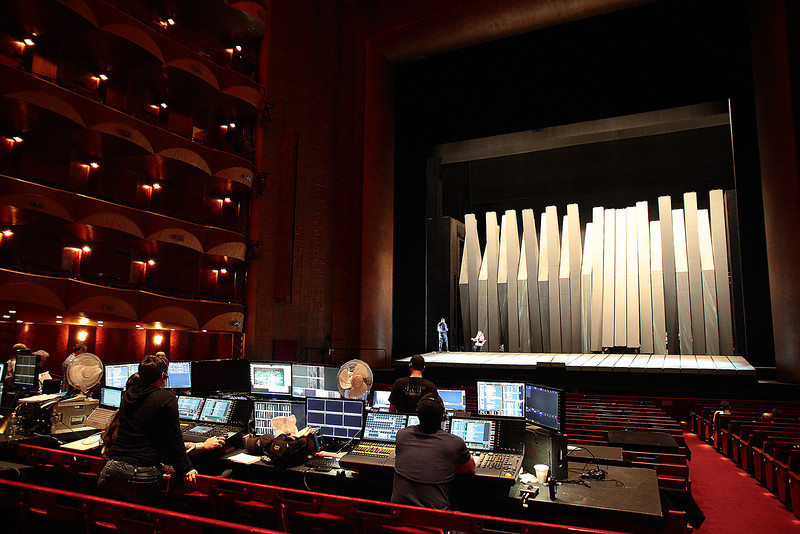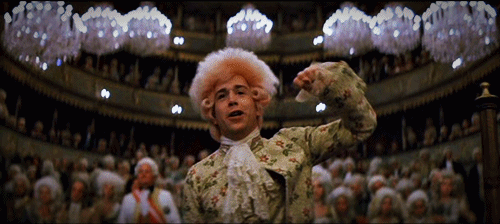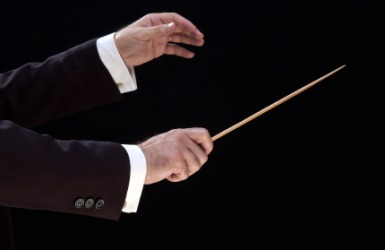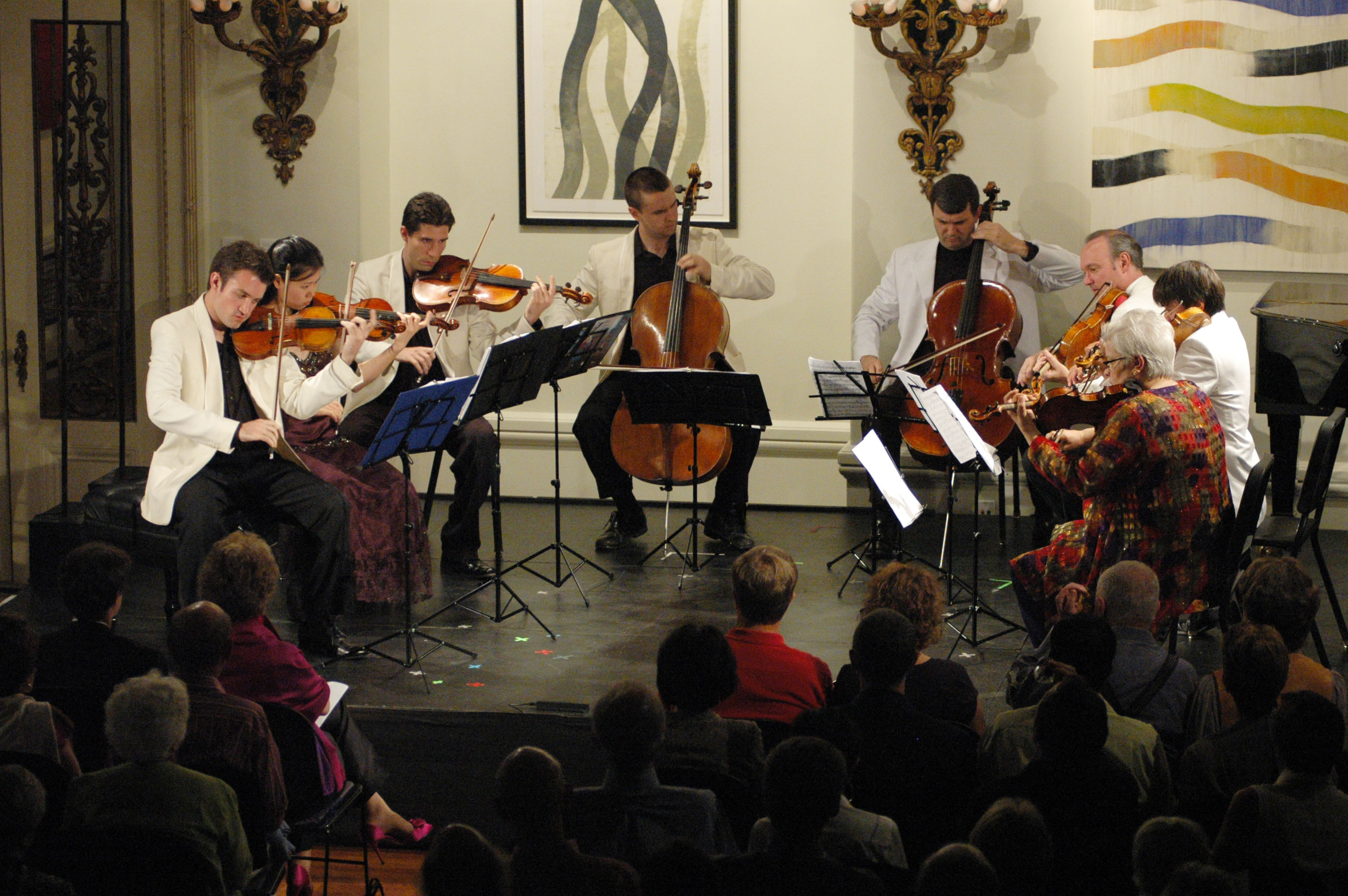For works that present a particular challenge for certain sections, orchestras may have section rehearsals or sectionals in which a section of the orchestra rehearse on their own under the direction of the Principal player in the section, or, in some cases, also with the conductor.
Prior to rehearsing a concerto with an orchestra,
a soloist will rehearse it
with a pianist substituting for the entire orchestra
(thus, two pianists in the case of piano concerto).
(thus, two pianists in the case of piano concerto).
A professional ensemble rehearses a piece in order to ensure that the pitches of the different sections match. The conductor calls out bar numbers or rehearsal letters to direct the orchestra to different sections which he or she would like to perform.
In a seated rehearsal ("Sitzprobe"/"prova all'italiana"), the singers sing with the orchestra, focusing attention on integrating the two groups.
In some orchestras, there may be a limited audience during the dress rehearsal (typically university music students).
An open dress is a dress rehearsal to which specific individuals have been invited to attend as audience members.
A preview, although with a full audience (including individuals paying for a lower admission), is arguably also a rehearsal: in complex performances, it is not uncommon for the production to stop, or even return to an earlier point in the performance, if there are problems.
A Q-2-Q (cue to cue) is a type of technical rehearsal intended primarily for the lighting and sound technicians involved in a performance.
Cue to cues are often preceded by a dry tech, in which the technicians rehearse their cues without the actual performers present at the rehearsal.
Source: Wikipedia









.jpg)
























